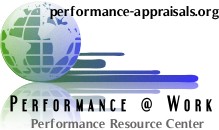How Does Performance Management Improve Training Return On Investment?
If you've read some of the other questions and answers in this section (on training), you'll know that training works well, and returns value for investment when it is clearly thought out, and focuses on the needs of the business and the employee, and not just on what is "wanted". So what's the link between performance management and training return on investment?
Performance management identifies what are called "performance gaps", differences between what an employee is accomplishing, and what we need the employee to accomplish. These gaps should be linked to business results.
It so happens that the purpose of training is to reduce "gaps" -- gaps in skills (what the employee needs to be able to do, and what the employee can do), or performance gaps.
So, the information from a proper performance management system is important in identifying performance gaps, and then deciding whether training will reduce those gaps. In effect, the performance management system serves to identify training needs and does so by referencing business needs. Performance management is the starting point for determining relevant training, not only for an individual employee but across the entire organization.
So the process works like this:
Performance management identifies performance gaps --> Solutions for reducing performance gaps are examined --> When training is indicated, further analysis results in more specific specifications of what training is required and how it should be set up.
